So you’ve built some raised beds and you need to fill them with soil, only to find out that the soil costs almost as much as the raised bed! Yikes!
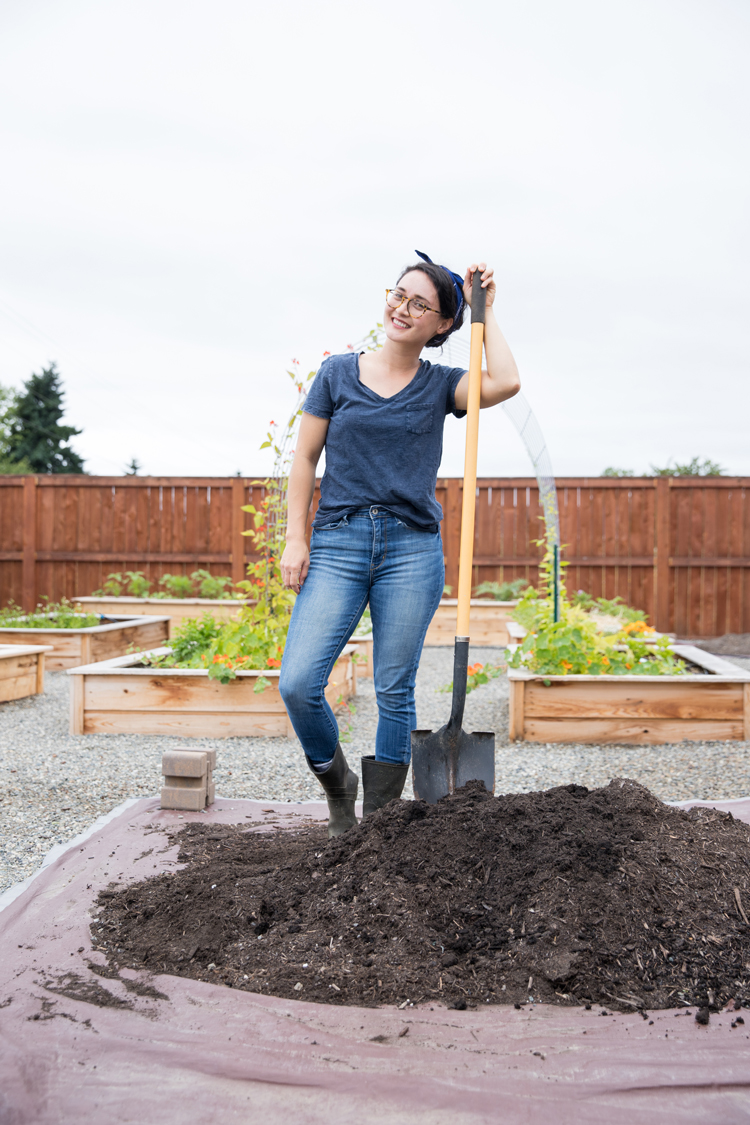
(If you haven’t yet built some raised beds, I have free tutorial HERE).
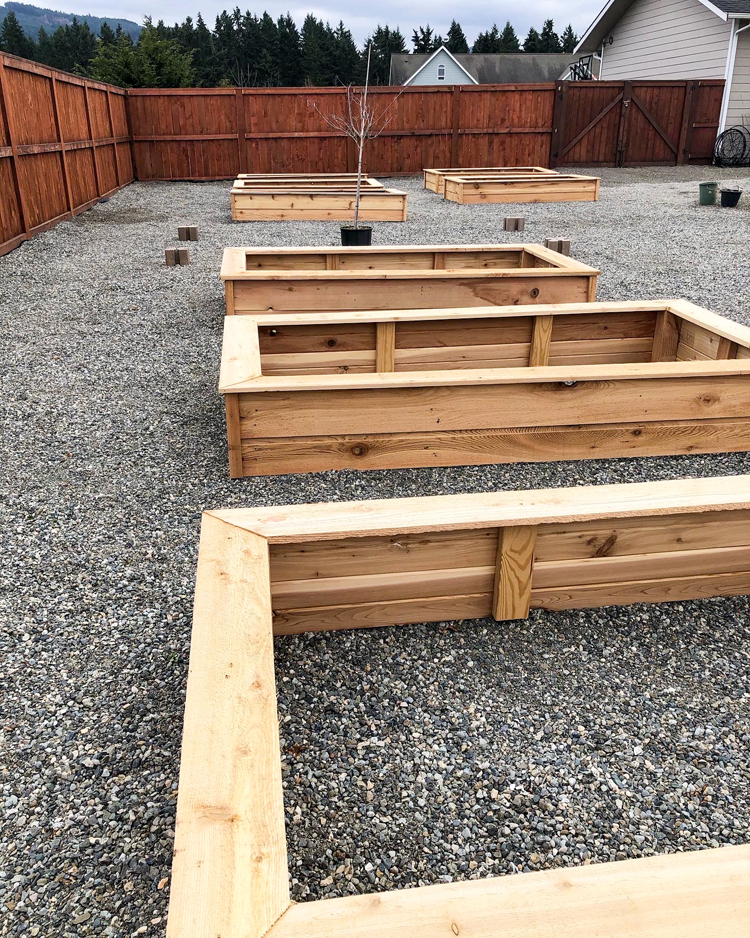
I feel your pain. We got 21 new beds this year and definitely could not have afforded to fill them with bagged soil from the hardware store!
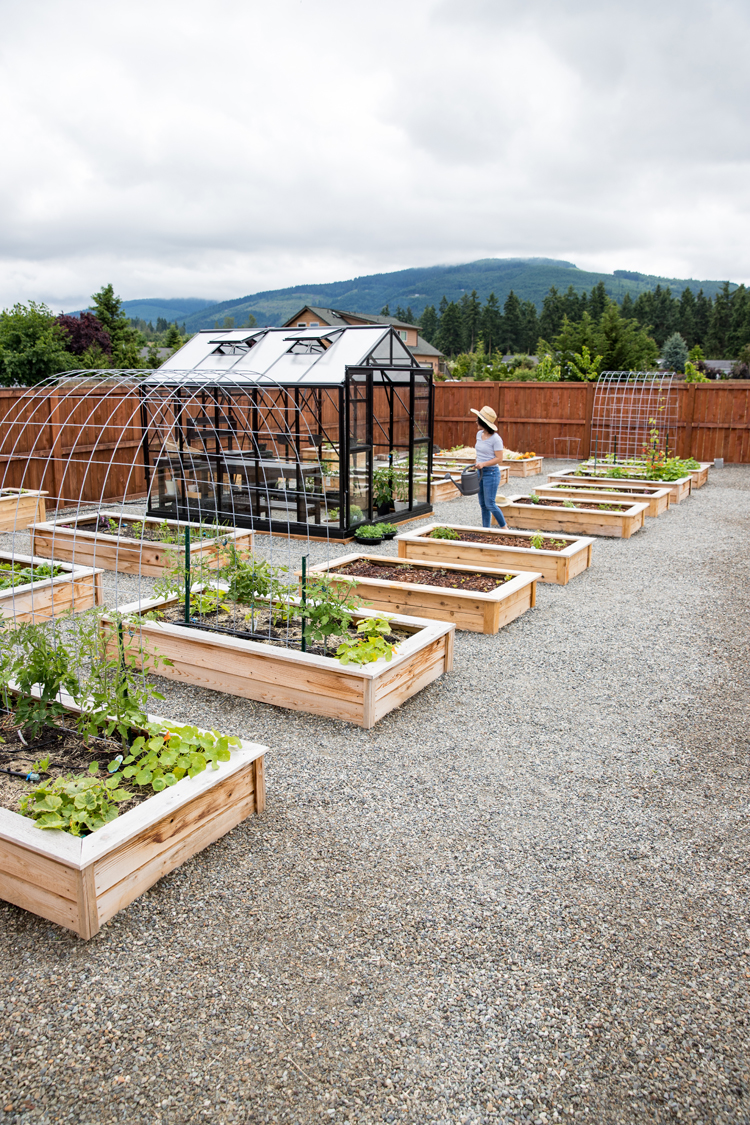
I have TWO main tips on how to cut your soil costs in half:
1.Buy soil from a soil/gravel yard instead of the store.
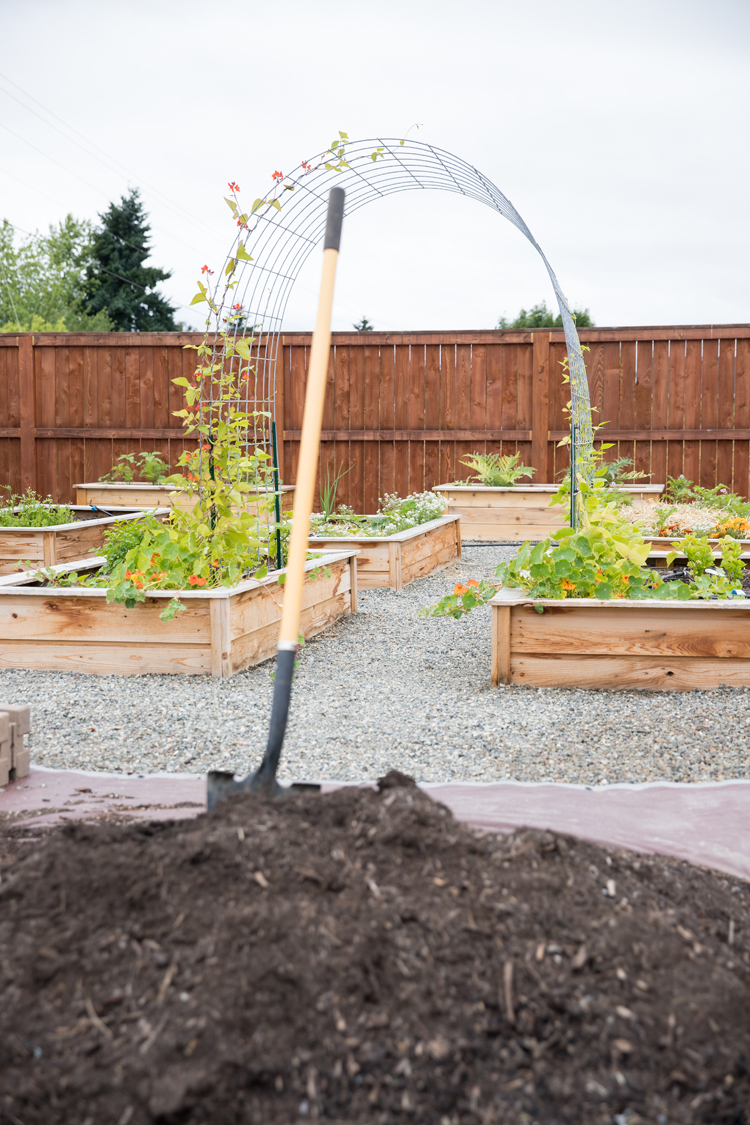
If you buy soil from the hardware store, you have to buy at least a dozen of bags at $5-10 a pop to properly fill a garden bed.
Look up gravel or soil yards in your area. You may need to reach out to a landscaper or contractor to see who they use to get their raw materials.
These yards sell soil by the cubic yard which equals 27 cubic feet. To put that in perspective, soil at the store is often sold in about 1/2 – 2 cubic foot bags. So as you can see, that’s a lot of soil! My yard sells a garden mix which consists of equal parts compost, sand, and manure for $30 per cubic yard cutting out more than half of the cost…easily!
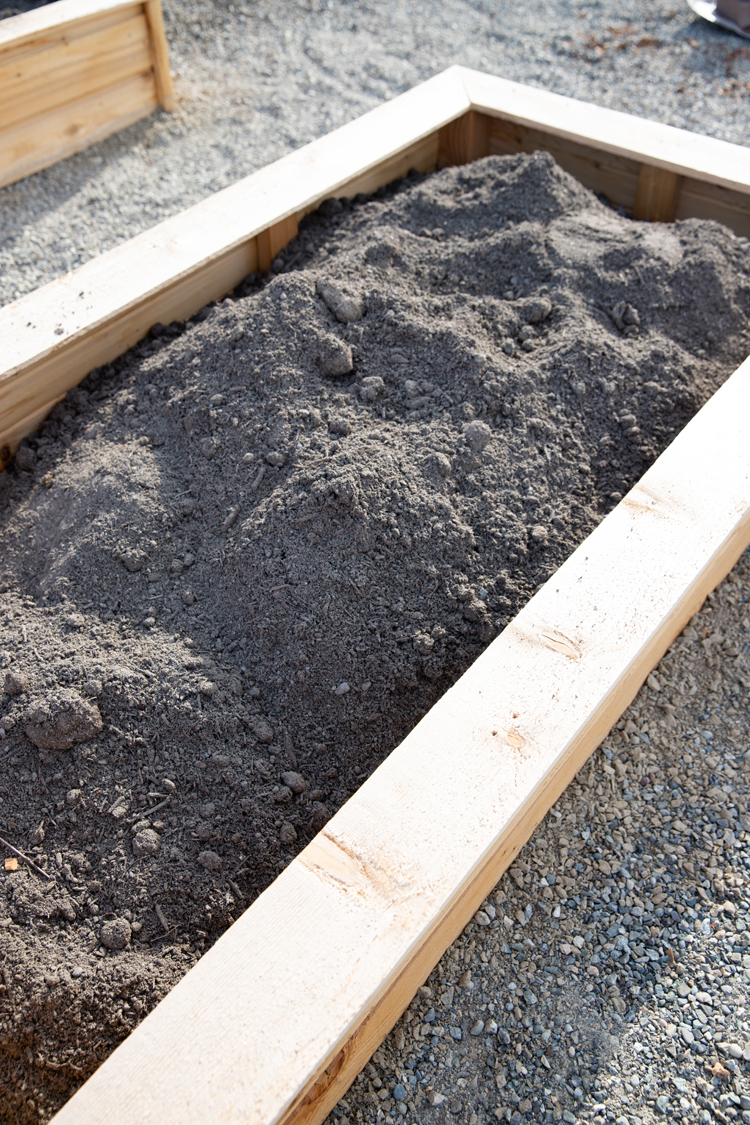
According to their measurements, our beds technically needed to be filled with 1.4 cubic yards. But because the soil wasn’t compacted, in reality we only needed about 3/4 a cubic yard for each bed. We will probably have to add to it in subsequent seasons, but the plan was to enrich it with new compost each year anyway.
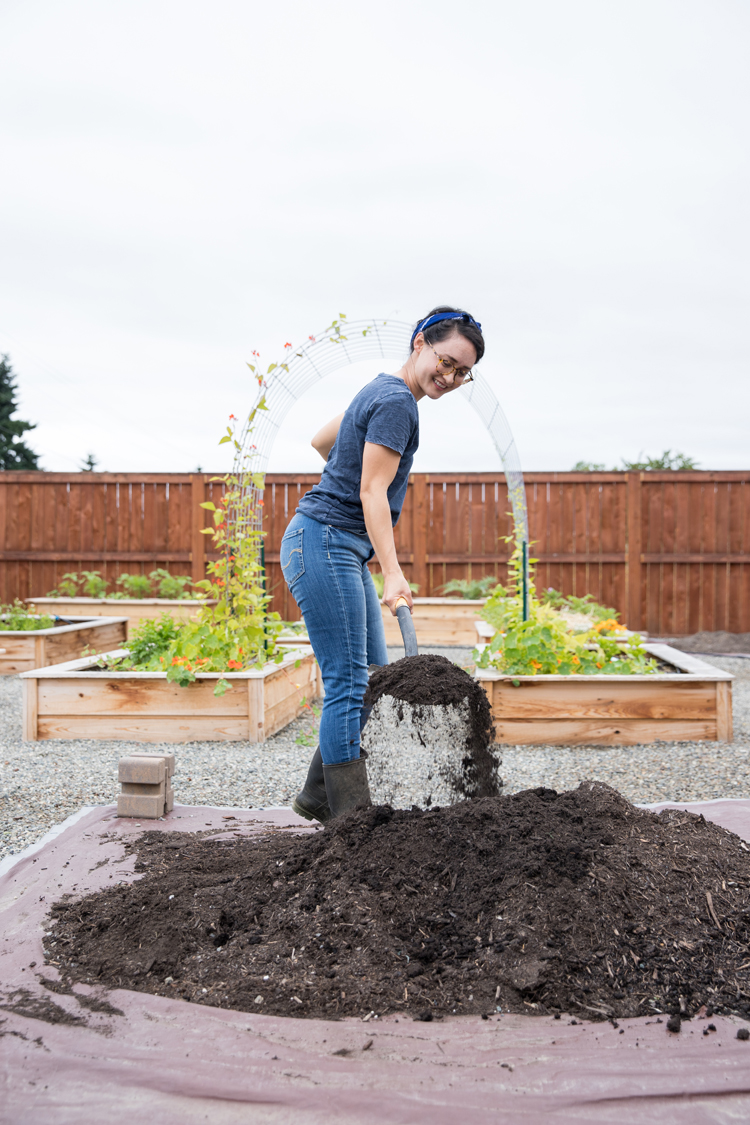
Pros of buying from a soil yard.
- Affordable cost.
- Less waste: no plastic bags to dispose of.
- Potting soil is good for small potted plants that need a lot of drainage, but are not as suitable for raised beds.
- If your soil yard offers pre-mixed garden soil, it takes out the work of having to mix manure and compost into your soil.
How to buy from a soil yard.
Despite all the pros, the con is that it is less convenient than using bags. You need to be able to either transport the soil yourself in a truck or trailer, or have it delivered to you. The savings are definitely worth the effort though.
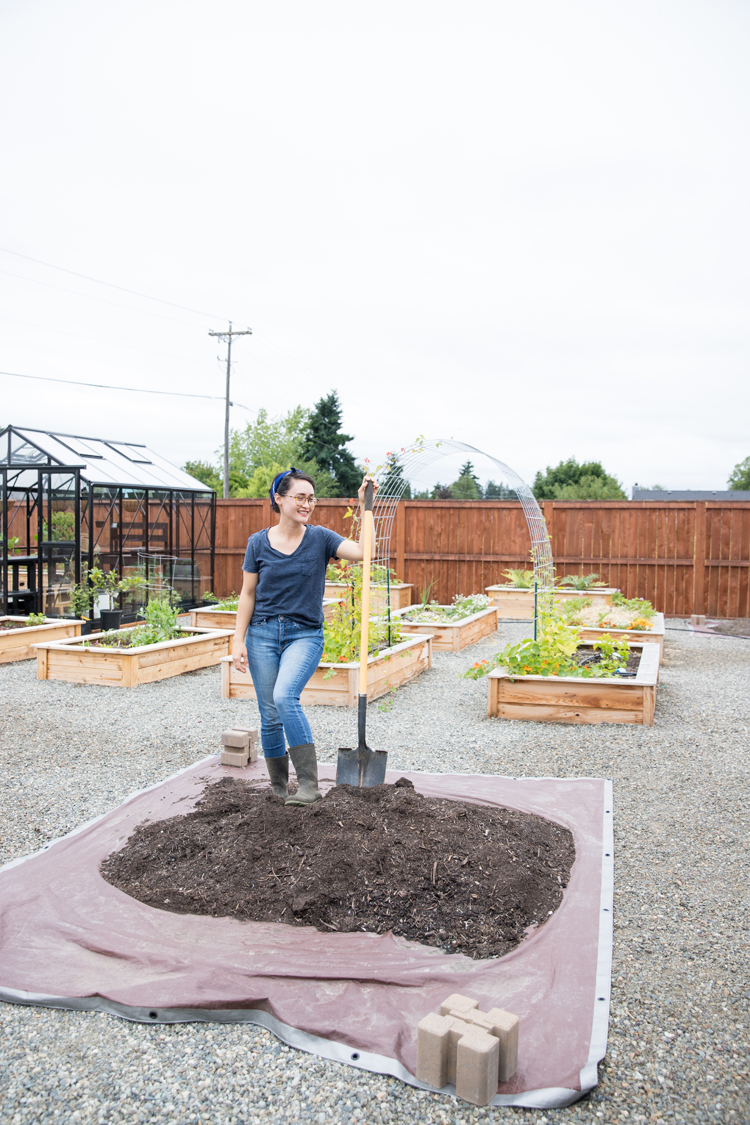
Delivery
If you need to have it delivered, check around to see if there are businesses who offer competitive rates that may be better than the soil yard’s rates. You can also save by buying in bulk and sharing with a neighbor. Some delivery services will allow you to split the delivery cost if you are close enough.
Home Depot and hardware stores may also rent out trailers for an affordable fee.
We bought a trailer for our yard projects so we wouldn’t have to have things delivered. It was a big up front cost (about $1500) but has paid for itself in how much we’ve saved in delivery fees. We have been doing all our landscaping ourselves and have A LOT of projects going on though.
Storage
Not sure where to put the soil while you’re using it?
Lay out a large, inexpensive tarp and have the soil dumped there. You can then shovel and wheelbarrow the soil where you need it to go. We sometimes transport the soil on the tarp (if it’s not too heavy) and slide it into the beds that way. We also used 5 gallon buckets to transport soil and even preferred using them more than our wheelbarrow.
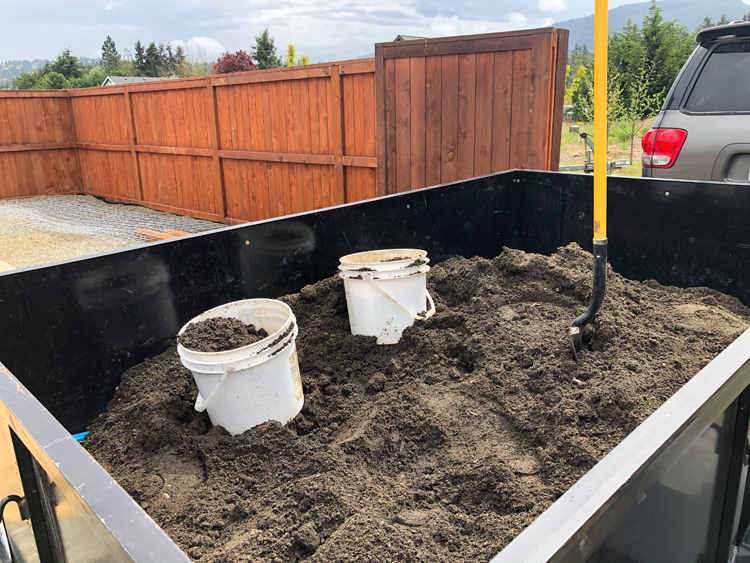
2. Utilize Hugelkultur.
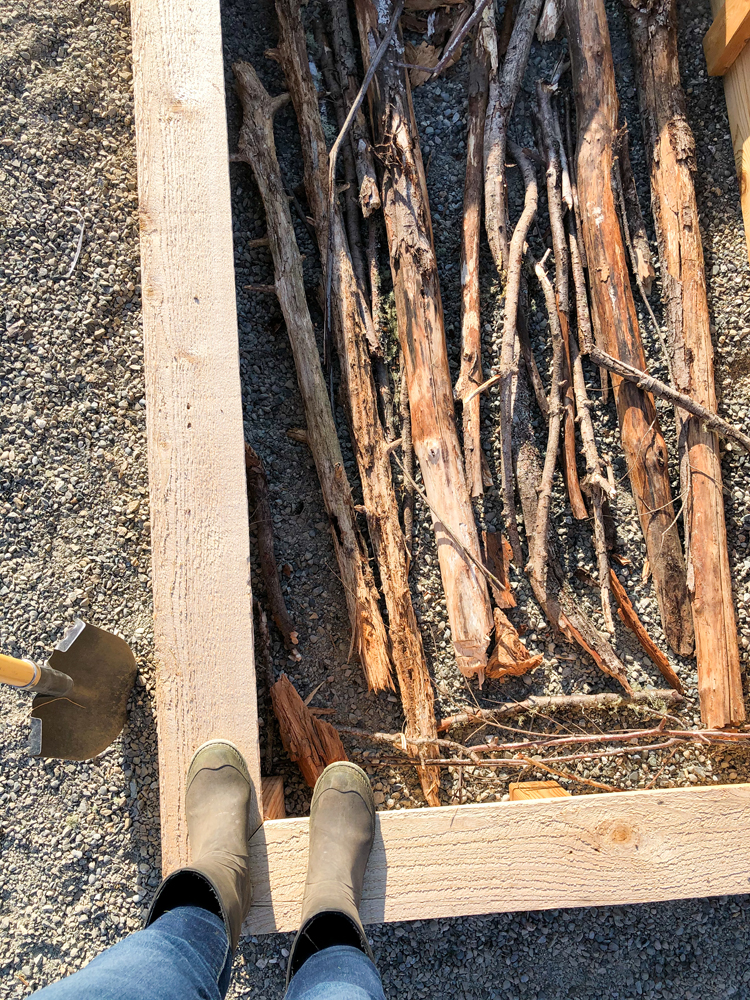
An awesome reader (Theresa Thompson,@imsewciallyawkward), noticed all the beds we were building and suggested hugelkultur to us. I went down a research rabbit hole and discovered that hugelkultur is a German gardening technique that utilizes yard waste (rotting wood, leaves, branches, etc.) at the base of a planting area to act as a slow feeding compost to your garden. You essentially pile dirt and soil on top of yard waste and then garden in it. It will break down over time and feed your plants.
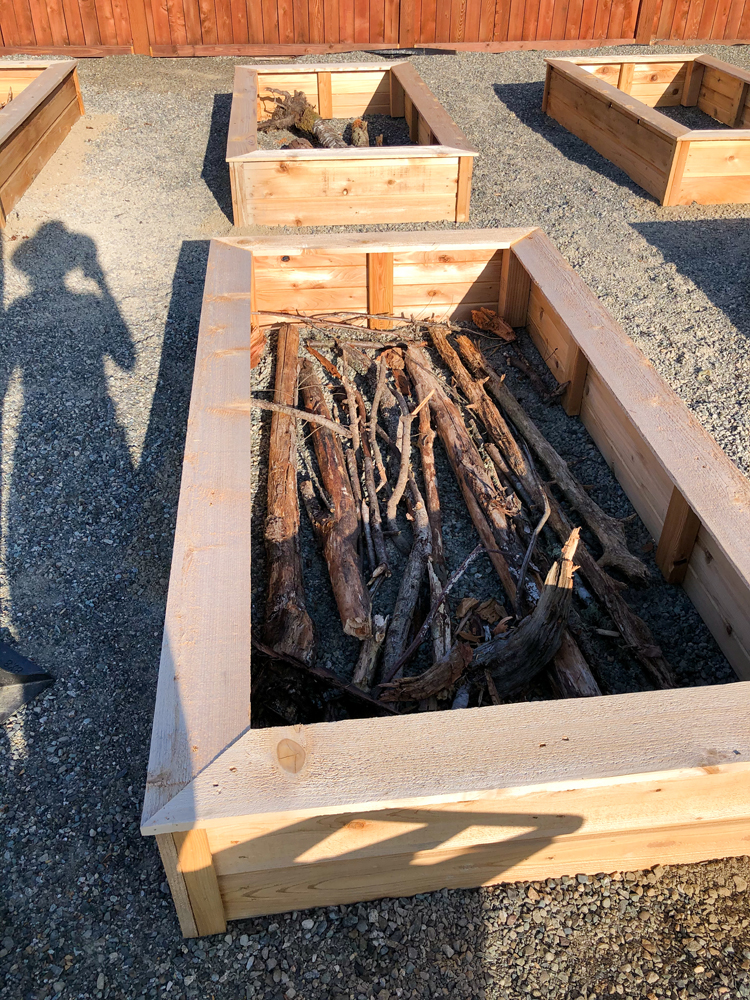
It is not usually used in the context of raised beds, but we figured…why not? We placed branches and leaves at the bottom of some of our beds and covered them with soil. This reduced the amount of soil we needed to fill our beds and has added to the nutrition level of our soil.
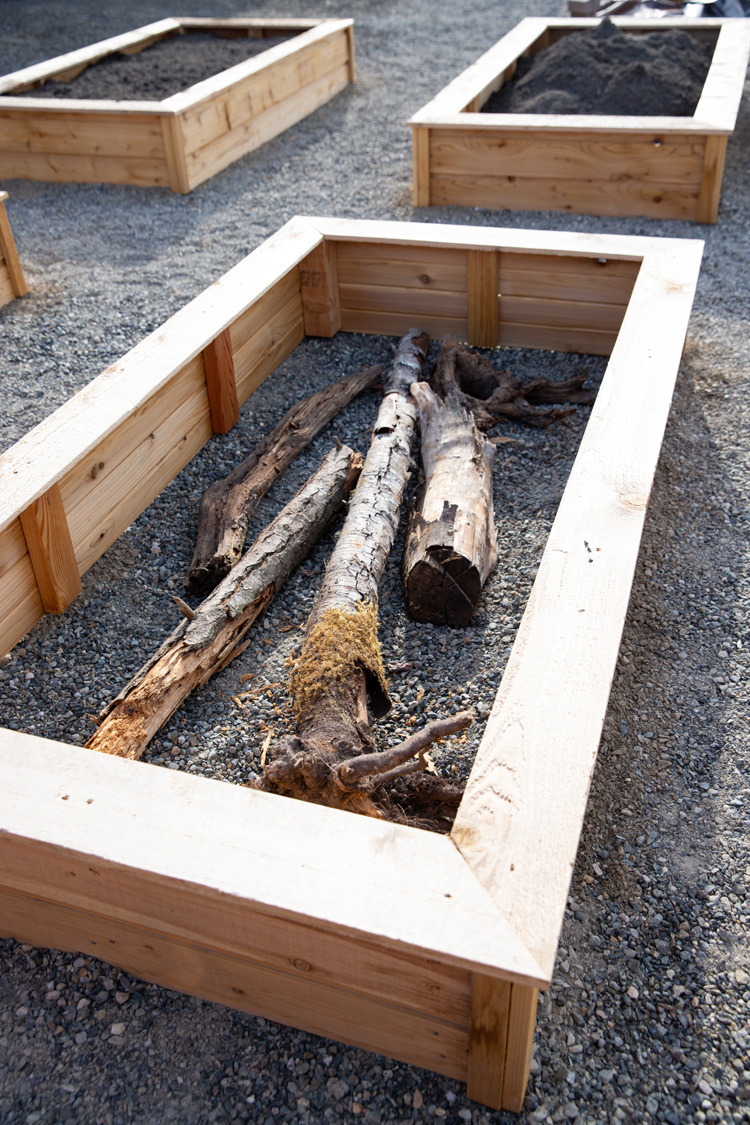
It can save you the trouble of having to dispose of your yard waste as well. We didn’t have mature trees and yard waste to give to this project, but we had generous neighbors who did.
Tip: Just be sure to use types of wood that are already rotting or that are NOT resistant to breaking down, like pine and cedar.
We also did not include hugelkultur in the beds that we planned to put root plants into like carrots and potatoes.
Also, be mindful that rotting wood may attract pests. We are unsure if this is why we had such an invasive ant problem this year. We were able to control our infestation with ant bait spikes placed away from our plants, but it’s just something to be aware of.
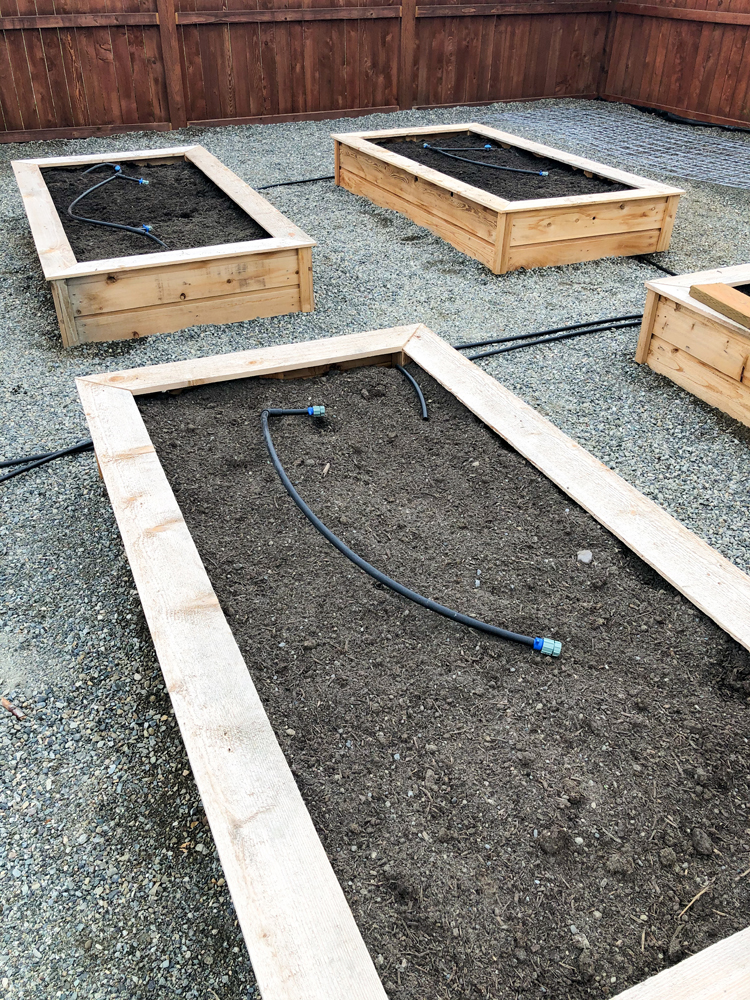
That’s it! Pretty simple ways to save money and to reduce waste!


Oh. My. Land. If I could kiss you right now, I would. This was *exactly* the solution we needed to be able to afford raised beds this year. We have a soil/gravel yard less than five minutes down the road from us, and sure enough they have a garden mix when I checked. So now instead of spending over $350 to fill the three beds we planned, we’re spending $165. Thank you thank you thank you!!
I am so glad my post helped you! Those savings are amazing!